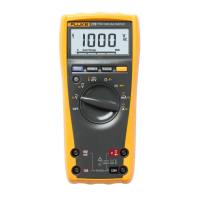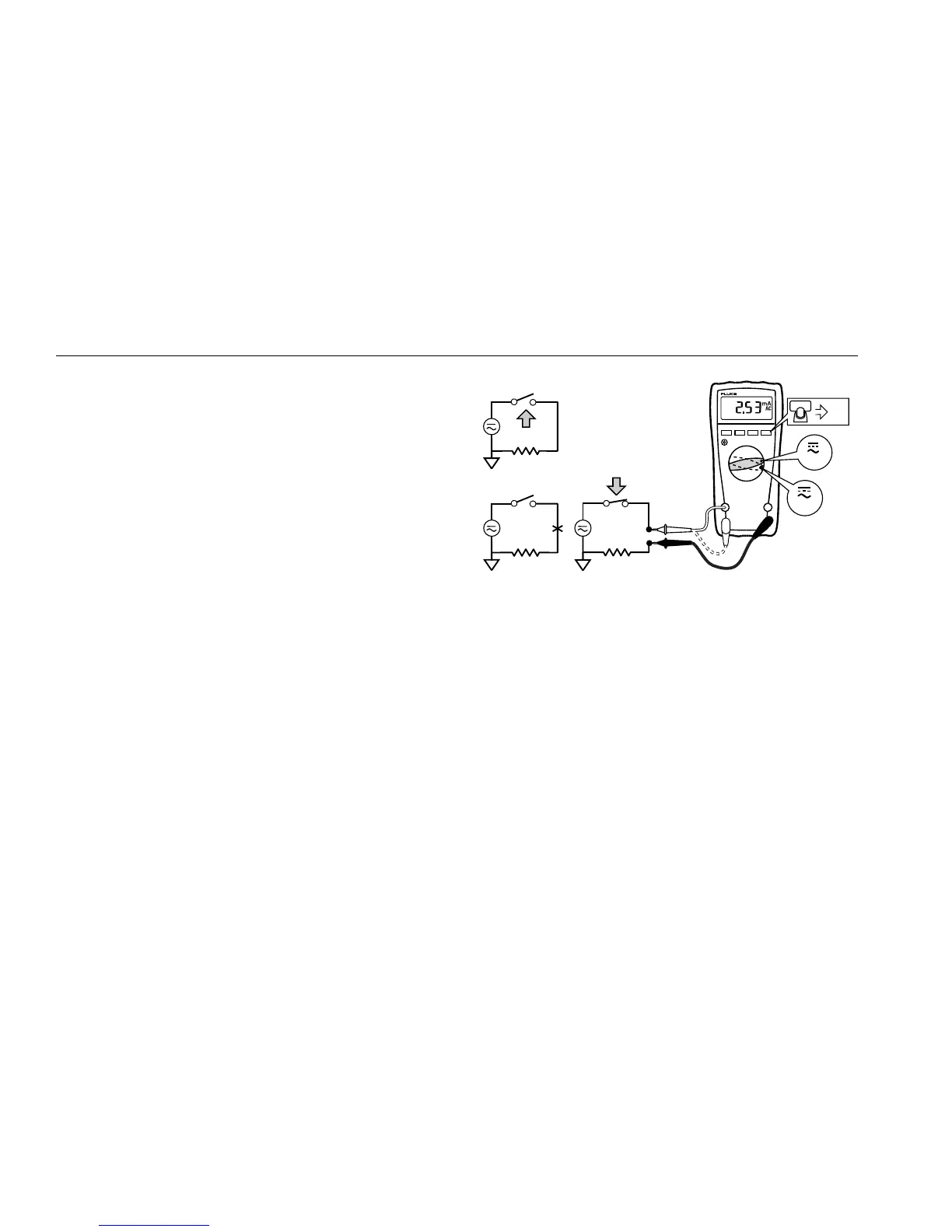175, 177, 179
Users Manual
14
Measure AC or DC Current
XW Warning
To prevent possible electrical shock, fire, or personal
injury:
• Never attempt to make an in-circuit current
measurement when the open-circuit potential to
earth is >1000 V.
• Check the Product's fuses before testing. (See Test
the Fuses.)
• Use the proper terminals, switch position, and range
for your measurement.
• Never place the probes in parallel with a circuit or
component when the leads are plugged into the
current terminals.
To measure current:
1. Turn power OFF.
2. Break circuit.
3. Insert Product in series.
4. Turn power on.
CAT
CAT
+
+
RANGEHOLD
MIN MAX
mA
A
DC
aik08f.eps
AC Zero Input Behavior of True-rms Meters
Unlike averaging meters, which can accurately measure only pure
sinewaves, True-rms meters accurately measure distorted
waveforms. Calculating True-rms converters require a certain level
of input voltage to make a measurement. This is why ac voltage
and current ranges are specified from 5 % of range to 100 % of
range. Non-zero digits that are displayed on a True-rms meter
when the test leads are open or are shorted are normal. They do
not affect the specified ac accuracy above 5 % of range.
Unspecified input levels on the lowest ranges are:
• AC voltage: below 5 % of 600 mV ac, or 30 mV ac
• AC current: below 5 % of 60 mA ac, or 3 mA ac

